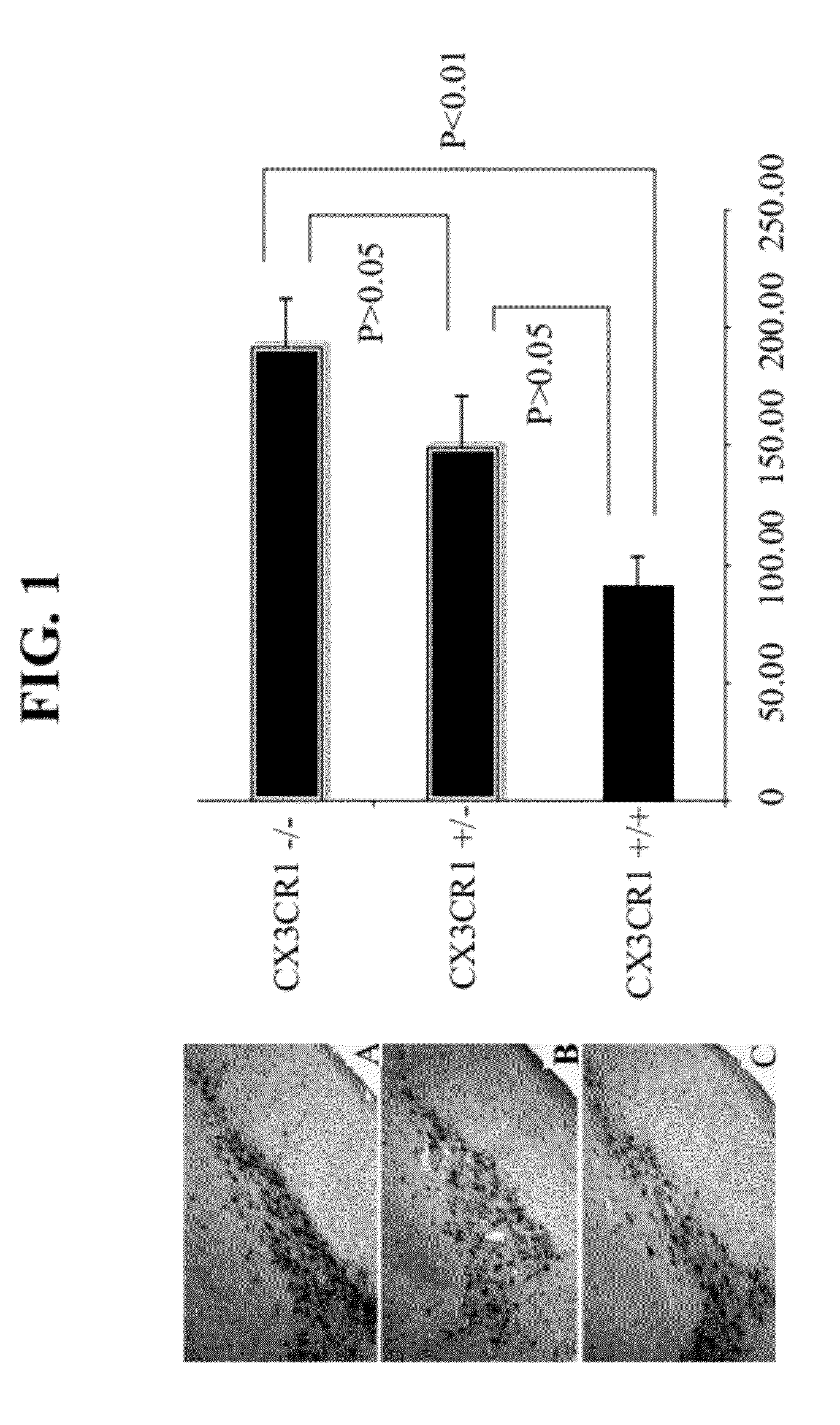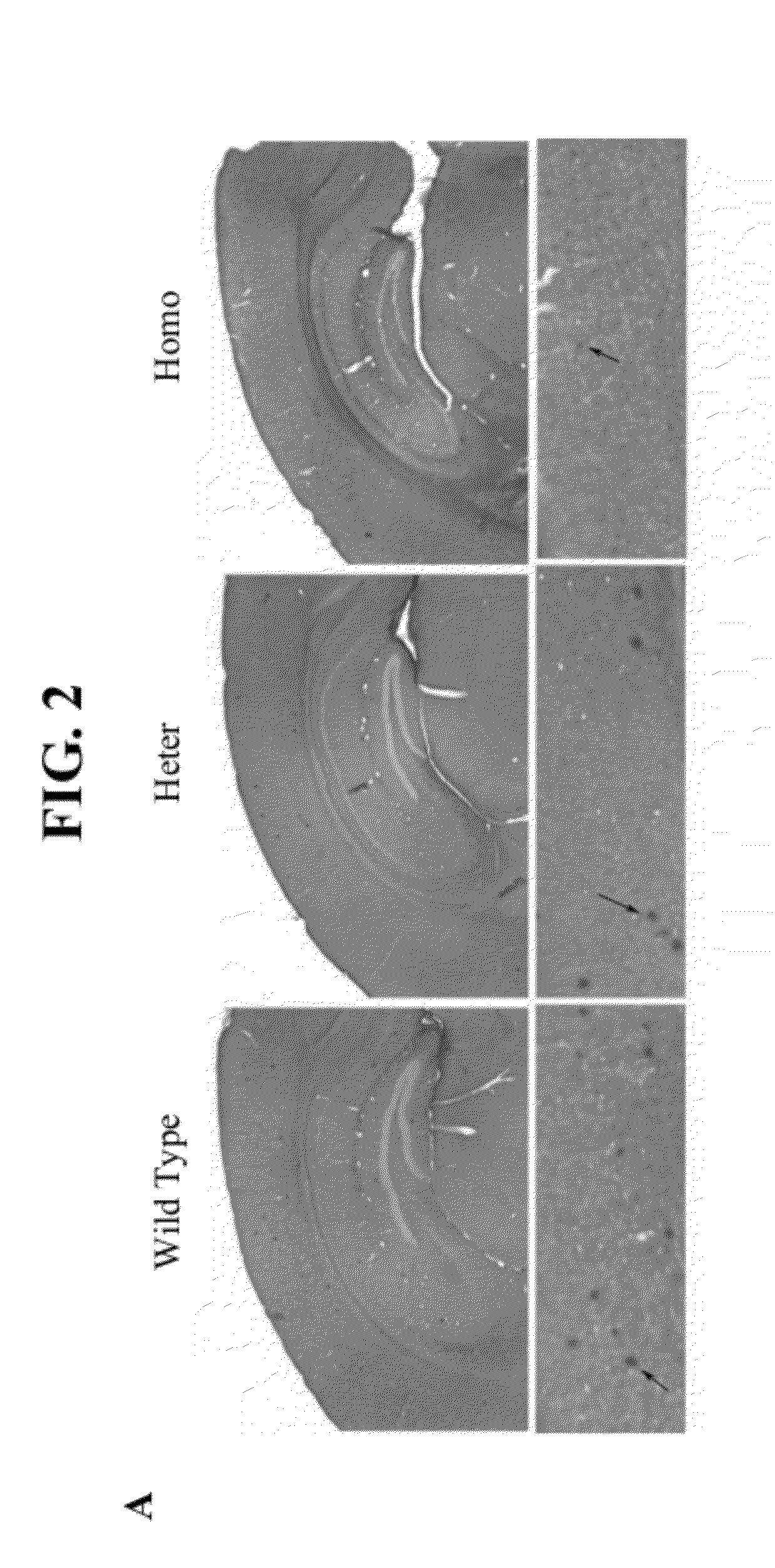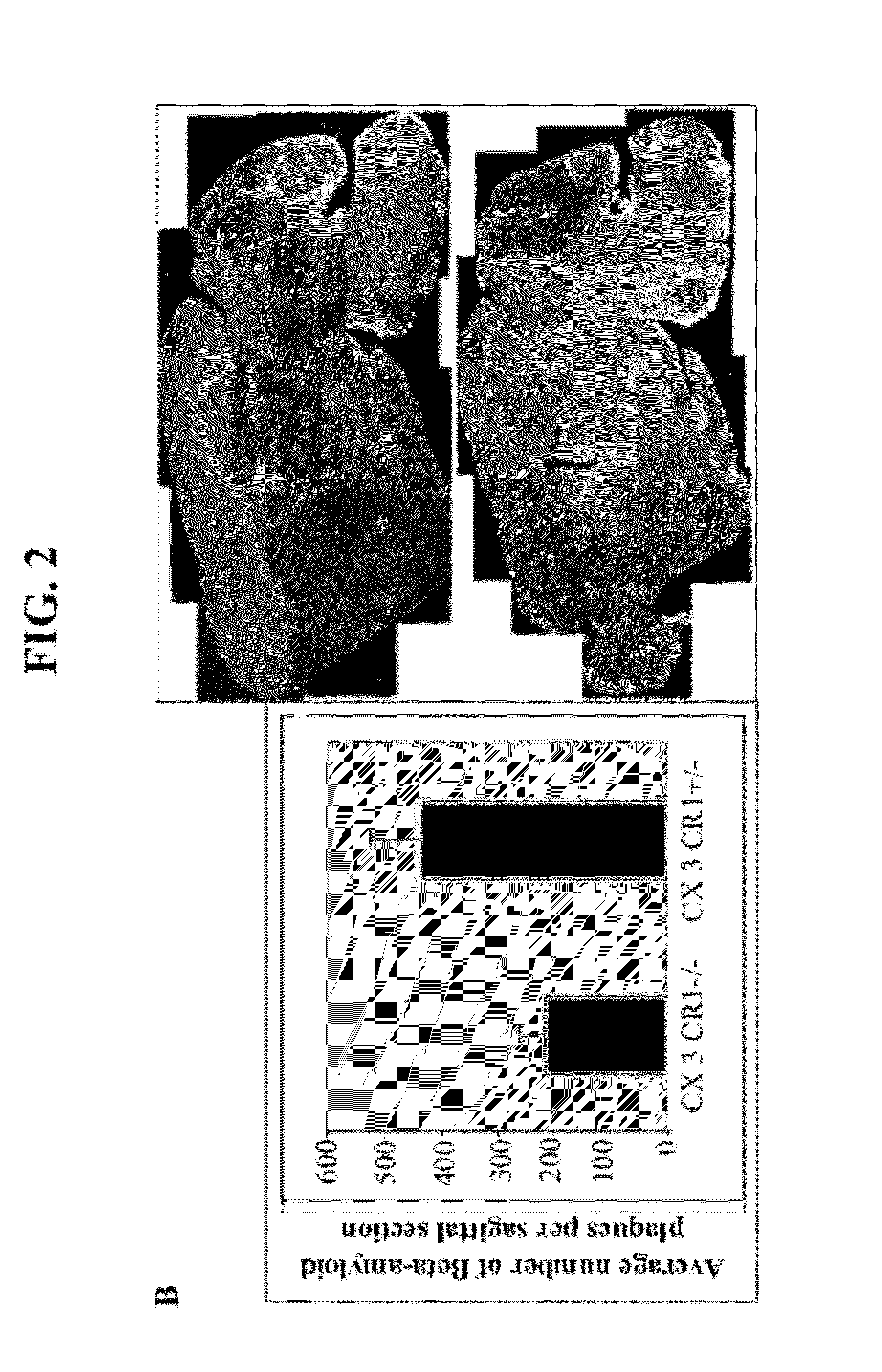Methods and compositions for regulation of neurological conditions
a neurological condition and composition technology, applied in the field of neurological conditions, can solve the problems of unfavorable cures or treatments, undesirable side effects, and tremendous debilitating neurodegenerative disorders for all, and achieve the effect of inhibiting initiation, progression and/or maintenan
- Summary
- Abstract
- Description
- Claims
- Application Information
AI Technical Summary
Benefits of technology
Problems solved by technology
Method used
Image
Examples
example 1
Response of CX3CR1 Knock-Out Mice to MPTP Induced Neuronal Injury
[0056]To determine if CX3CR1 and / or a CX3C ligand (e.g. fractalkine) function was involved in the initiation, progression and / or maintenance of a neuroinflammatory disease, a study analyzing the function of CX3CR1 in mice treated with 1-methyl-4-phenyl-1,2,3,6-tetrahydropyridine (MPTP), a widely used model of Parkinson's disease was undertaken. The MPTP model used consisted of injecting knock-out mice intraperitoneally with 25 mg / kg of MPTP at two hour intervals for a total of four times. Following the series of injections, the mice were sacrificed at intervals of 2, 7, 14, and 28 days. At the time of sacrifice, the animals were perfused transcardially with 4% paraformaldehyde and their brains dissected out and fixed in 4% paraformaldehyde overnight. The brains were subsequently cryoprotected with 30% sucrose over 2 days, at which point the midbrain and striatum areas were cut out and frozen on dry ice. Frozen sections...
example 2
Affect of Neutralizing Antibodies Against CX3CR1 on Neuronal Injury Upon Challenge with MPTP
[0058]The ability of two commercially available neutralizing antibodies to CX3CR1, anti-rat CX3CR1 (Torrey Pines Biolabs, Inc., rabbit polyclonal, Catalog No. TP-501) and anti-human CX3CR1 (Torrey Pines Biolabs, Inc., rabbit polyclonal, Catalog No. TP-502) to prevent cell injury and death were tested. Wild-type C57B6 mice were given the same MPTP treatment as described in Example 1. The antibodies were injected into the lateral ventricle of the mice using a stereotaxic apparatus and a Hamilton syringe. Antibody injection was done 24 hours following MPTP treatment. A second control group received an injection of non-specific immunoglobulins. Mice were anaesthetized and a burr hole was drilled through the cranium with a microsurgical drill according to stereotaxic coordinates (Atlas of Paxinos and Paxinos). A Hamilton syringe was used to introduce either 2 μl of test antibody (1:100) or control...
example 3
CX3CR1 Knockout in a Transgenic Alzheimer's Disease Mouse Model
[0059]CX3CR1− / − mice were bred with a mouse model of Alzheimer's Disease (AD) (Mo / Hu APPswe PS1δE9, Jackson Labs). The AD mice develop abundant amyloid plaques by 5-8 months of age. Amyloid plaque load in the cortex and hippocampus of the crossbred mice was compared by evaluating the effect of CX3CR1 knock out with the wild type CX3CR1 genotype found in the AD mice. Mice at six months of age were sacrificed and fixed by perfusion with 4% paraformaldehyde. The brains of age and sex matched mice were dissected out and fixed for 24 h. Brains were cryoprotected with 30% sucrose, frozen on dry ice, and cut in 25 μm thick sections with a cryostat. To highlight amyloid plaques, sections were stained with either thioflavin S or antibody 4G8 raised against β-amyloid (Signet Laboratories). Sagittal and coronal brain sections were imaged using a Zeiss Axiovert microscope. Imaging software (NIH) was used to quantify and compare the ...
PUM
| Property | Measurement | Unit |
|---|---|---|
| thick | aaaaa | aaaaa |
| concentration | aaaaa | aaaaa |
| concentration | aaaaa | aaaaa |
Abstract
Description
Claims
Application Information
 Login to View More
Login to View More - R&D
- Intellectual Property
- Life Sciences
- Materials
- Tech Scout
- Unparalleled Data Quality
- Higher Quality Content
- 60% Fewer Hallucinations
Browse by: Latest US Patents, China's latest patents, Technical Efficacy Thesaurus, Application Domain, Technology Topic, Popular Technical Reports.
© 2025 PatSnap. All rights reserved.Legal|Privacy policy|Modern Slavery Act Transparency Statement|Sitemap|About US| Contact US: help@patsnap.com



